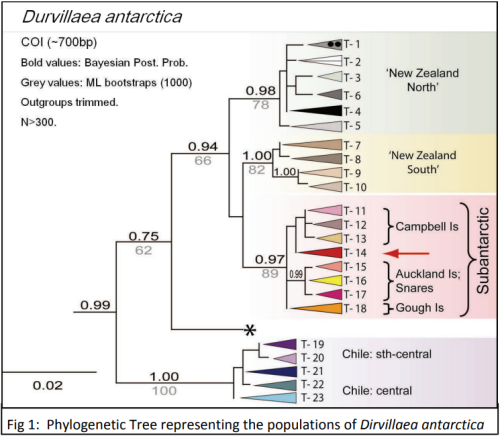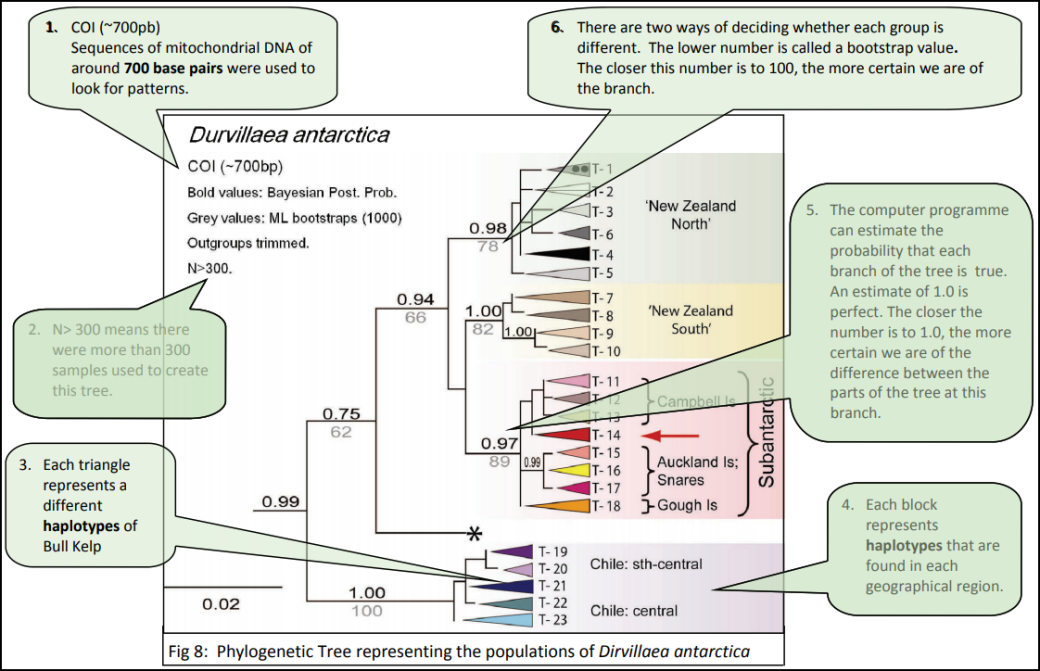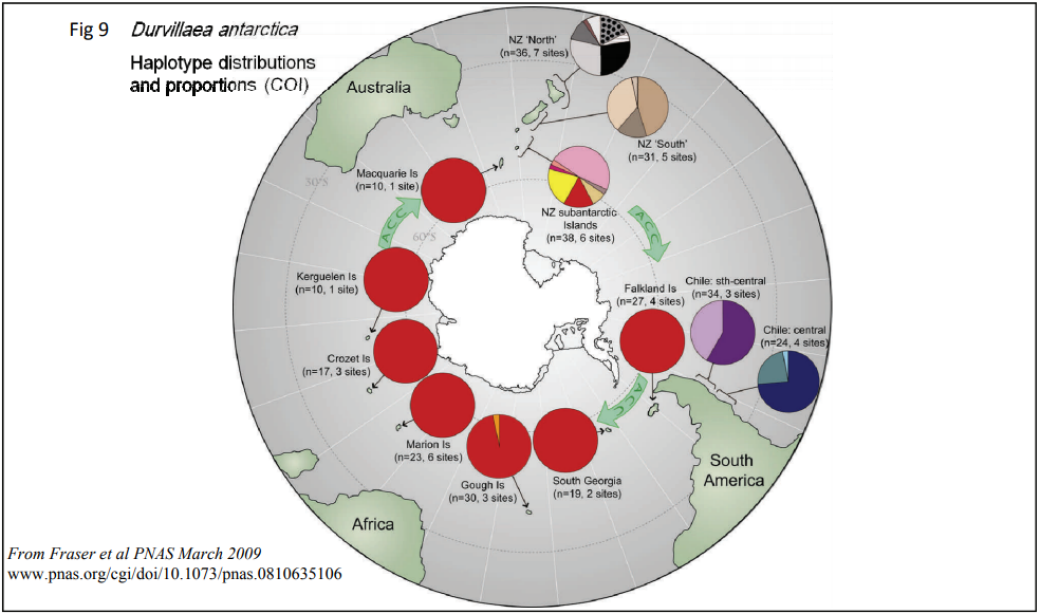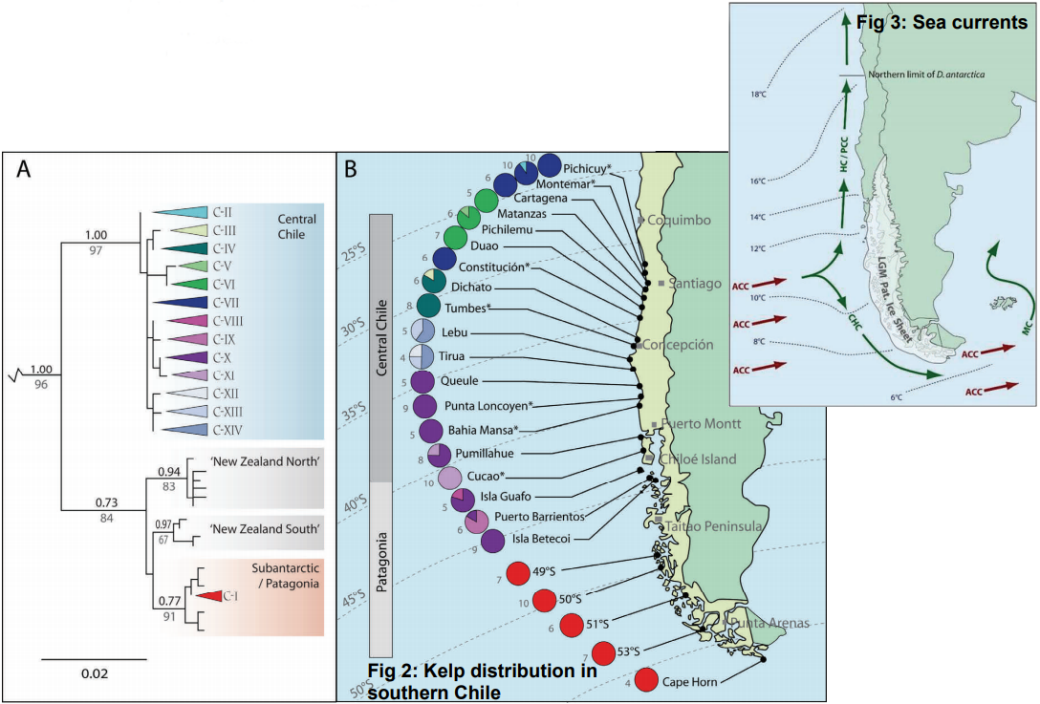1. The genus Durvillaea (commonly known as Southern Bull‐Kelp) contains a number of species, of which Durvillaea antarctica is one.
a. Define genus and species. Biologists have different ways of defining species. Three of the most common are the biological, morphological and phylogenetic species concepts.
b. Explain the differences between each, including a description of its limitations.
2. Figure 1 shows a phylogenetic tree illustrating genetic variation within the single species Durvillaea antarctica. Explain what the diagram tells you about the variation shown within the species. Do you think this bull‐kelp should be treated as one, or several, species? (Do you feel you have enough information to make this decision, and if not, what other information might you require?)
3. Ceridwen and the team analysed the samples from the populations using molecular biotechnologies. The evidence allowed them to infer what had happened to the populations in the last glacial period. What does the term infer mean and why is it used in this context?








